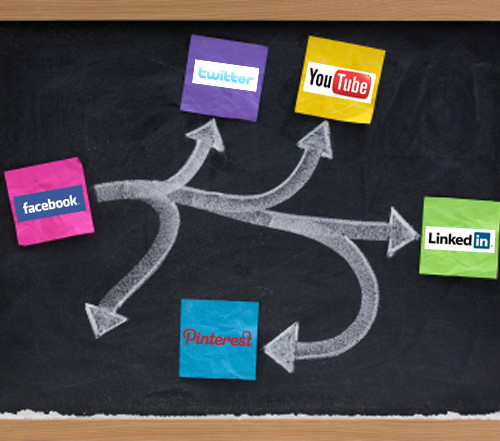With new tools and channels popping up all the time, there is an impulse for many brands to experiment with new toys in a bid to spark a short-term burst in customer activity. Few things last forever and often today’s fad can be yesterday’s news in next to no time in the fast-paced, real-time society that we live in.
Jumping on the right bandwagon early enough has its benefits, but often such activity lends itself to short-term thinking, which itself usually results in promotional campaigns that offer no progression of brand values. This encourages consumers to shop on price alone, with no guarantee that the technology/channel investment will resonate. Investing in a minidisc instead of an iPod is an appropriate analogy in this instance.
Often in the wake of a particularly humiliating social media faux-pas from a brand who supposedly should know better, many onlookers wistfully shake their heads and bemoan a lack of foresight – yet what tools and insights are required to make that informed decision in the first place. Hindsight is always 20/20, but having the confidence to make the right call on whether to engage, as well as how and how frequently requires bold thinking, especially when both the media and consumers love to hype the next big thing.
Thus, here are some basic tips on choosing the right kind of engagement for your brand:
To serve and protect (from negative sentiment)
By engaging on a social platform and opening an official brand account, you are opening up a new channel of communication between you and your audience. While in the past, e-mail marketing and direct marketing represented one-way forms of communication for brands to broadcast a generic, impersonalised message, today consumers hold higher standards.
The balance of power has changed and now lies with the consumer. Certainly when it comes to reputation, brands tread a much finer line with regards to morals and ethics. Consumers are much better equipped to mobilise themselves quickly around a cause and fight back. Only recently did we see Facebook forced into amending its platform following strong protestations from users after a negative news story.
Any time you open up a channel for communication, it’s imperative that you make yourself available should a consumer wish to begin a conversation. For larger scale companies, it may appear overwhelming, but consumers aren’t interested in excuses. When they reach out, as long as strict guidelines are in place it is rare that responding to that call will ever be a negative. More often than not, it’s a relatively easy way to exceed expectations and create a genuinely positive touchpoint.
A picture paints a thousand words
Instagram, Pinterest and most recently Snapchat; all these platforms place imagery at the heart of the experience. What’s more, as the popularity of these platforms grown, the further they’re adapting to encourage brands to join in too.
Much is made of the short attention spans characterising the newer generations and it makes logical sense they’re proving so popular. We’ve always been drawn to beautiful imagery and content – and the web is finally reaching a place where high picture quality is ubiquitous allowing both brands and users to create content with a high pedigree in design, craft and beauty.
However, what makes visuals so powerful is also somewhat of a double-edged sword. The ability to paint a thousand words in a single picture is alluring, but who defines those words if there are none there? Therefore the message is down to interpretation and for a brand with strong needs to control its communications (being taken out of context is often a PR nightmare), one might say that engaging in image-led marketing is asking for trouble.
So often the downfall of a naïve brand on social platforms stems from failing to understand how a piece of content or communication will be interpreted by its audience. So with such new territory, brands need to be cautious when experimenting on these platforms. How will it influence and enhance a brand strategy?
Jack of all trades, master of none
The most visible platform for brand success is undoubtedly Twitter. Whether it be quirky, disruptive challenger brands such as Arena Flowers or Betfair Poker punching above their weight by acting differently, or Tesco, First Direct and O2 surprising consumers with a refreshingly human approach, the feelgood stories are perhaps easier to find in recent times than the social fails.
However, despite appearing the most fertile ground for brands, there is no less skill required in successfully engaging with consumers.
When seeking to define a strategic approach to the platform, Twitter Director Bruce Daisley suggests there is a tone of voice ‘triangle’ that should be observed: funny, helpful and informative. Paisley believes brands should seek to adopt one or two of these traits – as opposed to attempting to master all three.
Each offers the consumer a form of value and if done well, it can provide a path to effective two-way engagement. But brands should remember that regardless of which tone is selected, it must be true to that brand’s identity.
People first, technology second
Despite impulses to the contrary, choosing the right platform for engagement requires a dismissal of the platform question altogether. Yes it is important to monitor the evolution of technology, for it continues to shape the behaviours of our everyday life; something brands need to monitor closely. But if we allow technology to lead our decisions with regards to customer engagement, then we’re failing to create a two-way conversation. We’re seeking to engage based on faulty assumption, rather than based on valuable consumer insight.
Customer engagement is about being human, and bringing the behaviours and traits we value as humans into the corporate world. The message being crafted is what is crucial; if the message is constructed using rich, data-driven insight and remains consistent, then the most appropriate channel will become quickly apparent.






